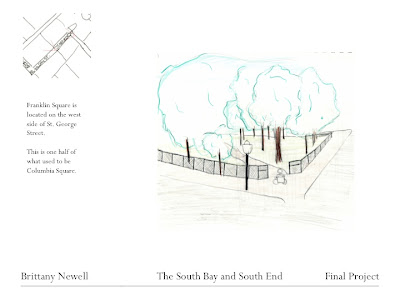
This is a view of the gateway to the back bay fens park. It is an urban to natural portal, where the columns frame the gateway.

This is the Boylston street bridge from Ipswich street. This is the only spot where this bridge is visible because of the turnpike.
 This is a sketch of the fens gatehouse that leads to Storrow drive. The gatehouse is far from the edge of the Charles River, but was meant to relate to the footbridge at beacon street in a land-making project.
This is a sketch of the fens gatehouse that leads to Storrow drive. The gatehouse is far from the edge of the Charles River, but was meant to relate to the footbridge at beacon street in a land-making project.










































